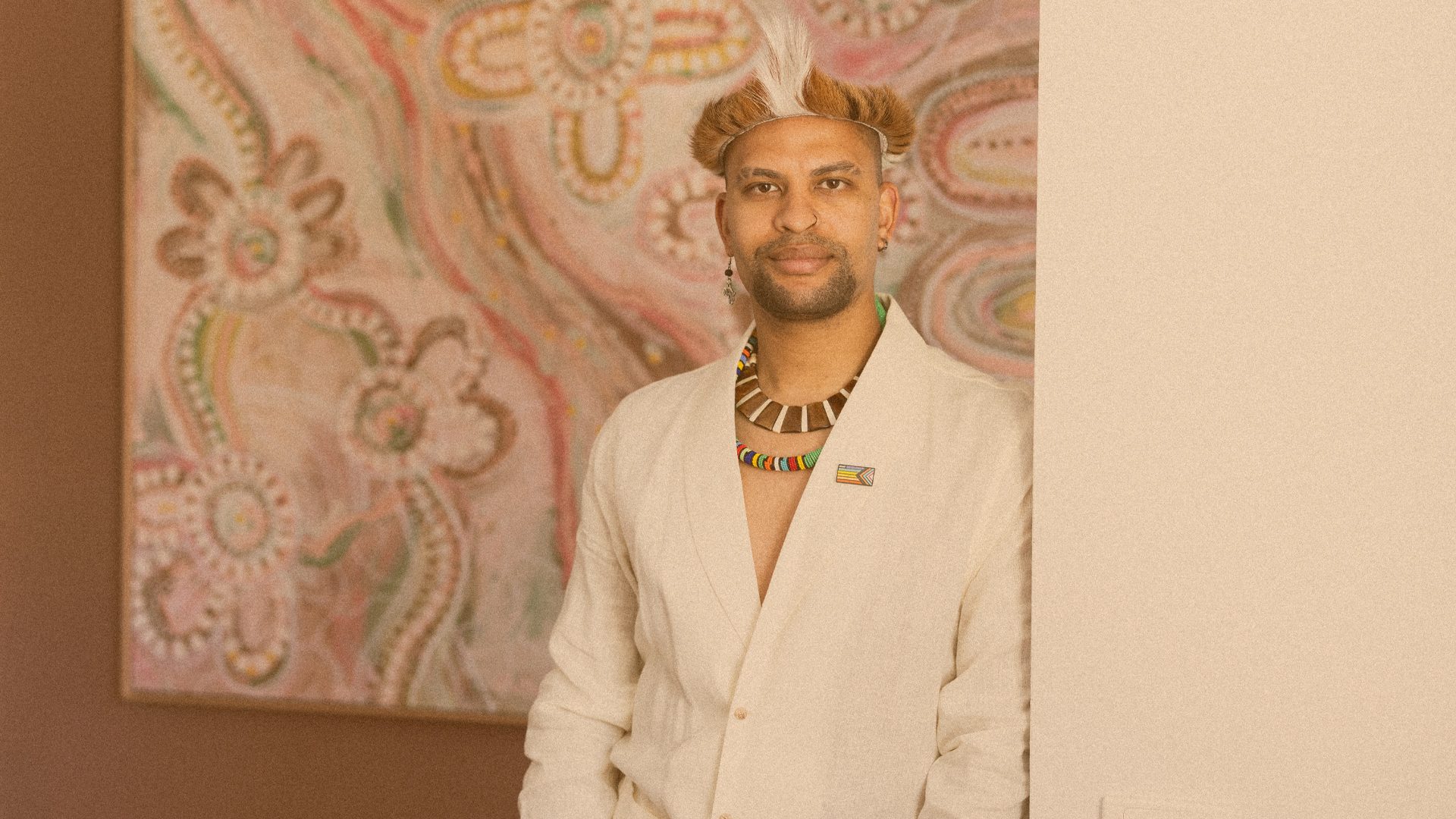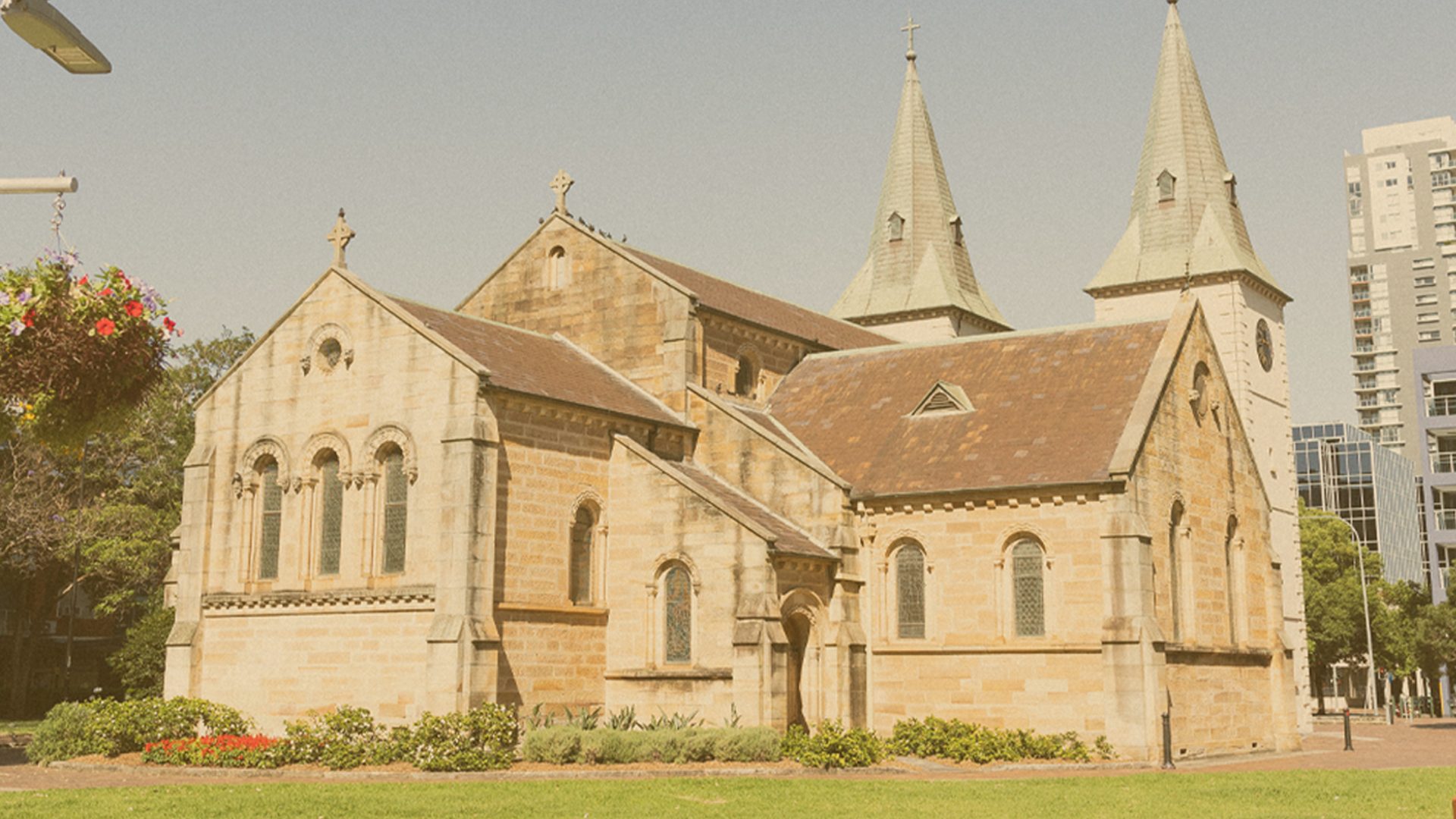After the no vote

Matt Wildig, a Palawa writer, is inspired by Voice to Parliament campaigner and Meriam man Gav Harris and his work as an advocate for First Nations people.
Despite the momentary cold snap that hung over Parramatta a few days before, it’s a hot day, and I’m sweating as I sip my coffee and pass my list of questions to Gav Harris. I can’t help but wonder if the cafe has even turned on the air conditioner and I’m worried that asking a man who’s just gotten out of the hospital to meet up for a chat about his work on the First Nations Voice to Parliament campaign was a bad idea. But Gav tells me he prefers a face-to-face conversation and that being out of the house is a good thing.
Gav grew up in North Queensland in the 1970s with his adoptive parents in a social landscape that was even more restrictive than it is today. His people are from Murray Island in the Torres Strait. Like many other Aboriginal and Torres Strait Islanders during the 1980s, Gav was not heard. His voice was discouraged and he became a victim of the social oppression that continues to dictate the lives of many Aboriginal and Torres Strait Islanders today.
Ideally, school life should’ve offered a respite from the racism of general society, but it didn’t; instead, as a teenager he was told by a teacher that he wouldn’t grow up to be anything special. This prompted his father to tell him that he would be battling these kind of racial stereotypes throughout his life. So Gav decided to keep his head down. He stayed away from the police, focused on the strengths he had, and realised that if he wanted to progress and get ahead he had to play the game – which is exactly what he did.
He moved to Brisbane to study a Bachelor of Arts focusing on English at the University of Queensland and joined a punk band. He wanted to show everyone who viewed him through a stereotypical lens that he could achieve great things. He’s excelled in his professional work as a technician and his advocacy work with the Voice campaign.
You might assume that someone so rooted in the fight for a parliamentary voice for Aboriginal and Torres Strait Islanders would have already considered himself an advocate for his people. But while Gav had always been politically aware and engaged in Indigenous politics– whether it was attending rallies for Indigenous land rights or against Indigenous deaths in custody – becoming a spokesperson for the Voice campaign took him by surprise.


When Gav started looking into the Voice he realised it was going to be a learning process. The media didn’t have a lot of information, but that didn’t come as much of a surprise to him. Gav explains to me that in Australia, Indigenous affairs is a blank space in the media — a lack of wanting to acknowledge and educate ourselves about what we can do to make things better.
As Gav talks about Australia’s colonial history and the concept of terra nullius, I get an even greater understanding of his passion, as well as his background studying English. His explanation of terra nullius is structured in a way I’d expect to hear in an academic setting, although he ties in his belief that Australia has a history of ignoring the fine print. He reinforces that there’s a discrepancy when it comes to Indigenous people. That’s the case in the education system, the media, and our social fabric.
This is part of why Gav invested his time into the Voice campaign. He wanted to be part of something that was about creating a new pathway, one that would actually address Indigenous affairs from a community level all the way into the federal government. For Aboriginal and Torres Strait Islanders, it’s clear that decisions are not made by the people who are most impacted on the ground level, Gav says.
He wanted to be part of something that was about creating a new pathway, one that would actually address Indigenous affairs from a community level all the way into the federal government.
Since the Voice campaign, he’s been even more active with his political work. During the last five months, he’s been helping a community program called Reconciliation for Western Sydney, a group that wants to educate the larger community about some of the Indigenous communities and organisations around the Western Sydney area. Gav tells me this is an opportunity for non-Indigenous people to find out about different Indigenous organisations and to connect with Indigenous people and non-Indigenous people who are interested in Indigenous issues.
He explains there are links between the struggles of Australian and Torres Strait Islanders and the experiences of certain non-Indigenous communities in Greater Parramatta, which has led him to become an advocate for a small group of local refugees. While he doesn’t tell me where these refugees are from, he tells me they fled here because they were being persecuted. It’s more than just finding a place to live—it’s life or death. Although he doesn’t say so, it seems Gav’s desire to help these refugees stems from his experiences as an Indigenous man.
Hearing Gav talk about the way refugees are treated gives me a better understanding of who he is and why he does what he does: he just wants to help where he can.
Hearing Gav talk about the way refugees are treated gives me a better understanding of who he is and why he does what he does: he just wants to help where he can. But he also knows he must use his time a bit more creatively. He tells me he tried to coach his kid’s soccer team but it became too much. But as a parent, I understand. To commit months of your life to travelling around Western Sydney, while working full time and trying to be an active part of your family's life.
He shows me his phone and swipes through picture after picture after picture of people who were involved with the Voice campaign: government officials, everyday volunteers like him and people who Gav has become friends with. He remembers nearly every single person by name, and if he doesn’t remember their name, he remembers their story. He’s taken a lot of people by surprise. Gav tells me it’s not often that an Indigenous advocate pops up out of nowhere and is willing to give up their time and make an impact in the way he has. He’s met local politicians and been invited to speak at one of the annual Parramatta Labor Party meetings.


Post-referendum, Gav’s stuck in a loop of not really knowing where he belongs. Does he join a political party or is he more of a community-focused kind of guy? Although he doesn’t know for sure where he wants to go, he knows that despite the loss in the referendum he wants to help break down Indigenous stereotypes. The few times he’s provided maintenance work on hardware in Arnhem Land have given him an opportunity to show local Indigenous kids that there are many pathways in life.
He tells me the kids are always surprised to see a Blak man working on the machines, and he’s happy to be there because he enjoys the work, but also because he’s able to connect and provide the Indigenous kids with a positive role model. Deep down, he knows he probably won’t see change on the scale he’d hoped would come about from the Voice campaign, but he’s hopeful for the next generation. Maybe something can change for them, because as he tells me, change is always occurring — it’s just not as obvious as you might think.
Deep down, he knows he probably won’t see change on the scale he’d hoped would come about from the Voice campaign, but he’s hopeful for the next generation.
Gav ends our conversation with a story about a time when he was walking his dog at a local park. Because of the conversation we’ve been having, I can’t imagine it will be a positive story, but I listen anyway. He tells me he was resting in the shade with his dogs near some trees and he heard kids playing a game one of them called ‘Aboriginals’. Having first-hand experience with the casual racism so prevalent throughout Australia, I’m bracing myself for what comes next in the story. But surprisingly, Gav tells me the children started to talk about how they were going to find leaves to heal themselves, and they were going to paint and feed the animals. They were being mindful of Indigenous culture and they were representing it in a positive light.
Sitting in the cafe, I am surprised at how the story turned around, and I think that maybe that’s how the rest of Australia will change in the future. With around 39% of the country voting yes for the Voice, I can’t sit around thinking that change isn’t going to happen. As an Indigenous man, it’s the kind of progress I want to see embraced by Australia. But if it doesn’t happen right now, I feel a little better knowing there are people like Gav who are trying to help advance the cause of Indigenous people in Australia. And after our chat, I think maybe there’s something more I can do to help.



About the Author
Matt Wildig is a Palawa writer who lives on Dharug Country. He is in the final semester of a Bachelor of Arts at Western Sydney University. He writes stories that inject speculative fiction into the heart of Parramatta and Western Sydney as a whole.
About the Series
Parramatta Profiles is a writing and photographic series that profiles individuals across Parramatta communities. Drawing on art, music, religion, activism and sport, each snapshot captures life in this dynamic city. A collaboration between Powerhouse and the Writing and Society Research Centre, Western Sydney University, this project supports the development of student writers by providing an opportunity to work with professional editors and be published by Powerhouse online.
Other stories within this series will be released over the coming weeks.





























